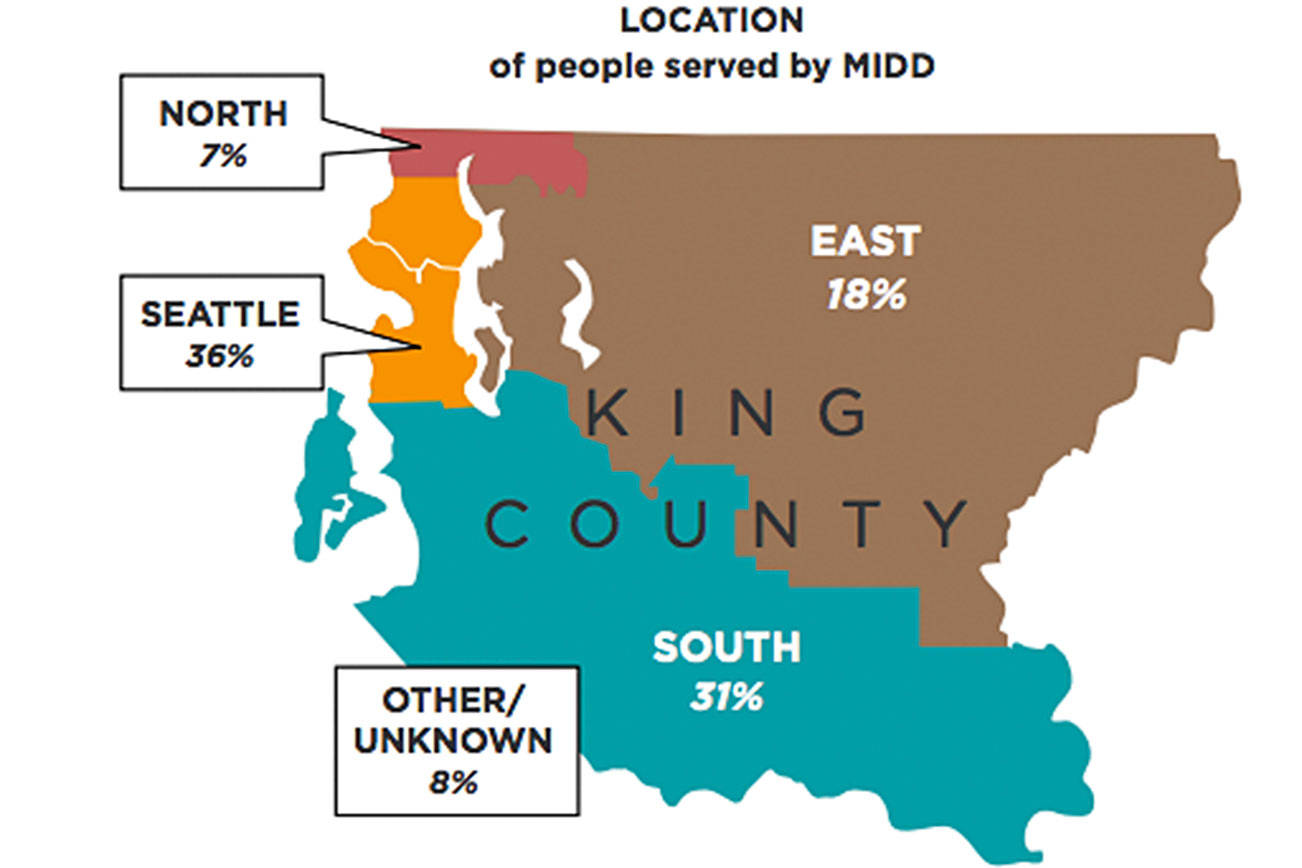A report on King County’s behavioral health programs shows the county has been successful in reducing the number of emergency services used by residents.
The 2017 report was accepted Feb. 13 by the King County Council and detailed how the county’s Mental Illness and Drug Dependency (MIDD) program was working. It was the first full year of service after the program was renewed and expanded in 2016. The tax for the programs was originally created in 2007 and is supported by a 0.1 percent sales tax. It is expected to bring in $143 million for the 2019-2020 budget. It funds programs ranging from early intervention and crisis diversion to treatment and recovery services and community re-entry programs.
The report found that nearly 29,000 people used at least one MIDD-funded service in 2017, of which 42 percent were youth or children under 17. The program has several goals, including diverting people with behavioral health needs away from jail and hospital visits. It also focuses on services that help people with mental health conditions or drug dependency to live healthy lives and avoid criminal involvement.
Seattle had the highest rate of people using the services at 36 percent of the total, followed by 31 percent from South King County, 18 percent from the greater Eastside, and 7 percent from north county including Shoreline. The report said MIDD participants reduced their use of psychiatric hospitals by 29 percent, jail bookings by 35 percent, and emergency room admissions by 53 percent after the third year since services started. Additionally, one in three people started a new job in 2017, and 70 percent had kept it for at least 90 days.
Around half of the people using MIDD services were white, about 20 percent were of unknown ethnicity, 13 percent were black or African American, and 11 percent were Asian or Pacific Islander. The programs seemed particularly effective in combatting anxiety and depression in those over 50. For people using opioid programs at the county’s needle exchange program, the report found 37 percent had reduced their substance use. And of people served by sexual assault behavioral services, 82 percent achieved their goals, the report said. The MIDD works together with two other levies in the county including the Best Starts for Kids and the Veterans, Seniors and Human Services Levy.
Councilmember Jeanne Kohl-Welles said the program has been fairly successful and uncontroversial.
“We have a very strong program and we’re reaching a lot of people,” she said. “We want all residents of our county to have healthy lives.”
The program is governed partially by a community committee which meets monthly, Kohl-Welles said. It is comprised of elected officials, community representatives, behavioral health and drug dependency experts. The 2017 report was submitted to the King County Council and sent through committees beginning last summer, but because last year was a budget year, committees were put on hold for much of the second half of 2018. The 2018 report, which is due out later this year, should give the county better view of how the programs are working. MIDD programs will become more important as the region struggles with addressing homelessness.
“It’s challenging, but I think MIDD is really critical to our residents, and we’re seeing more and more individuals who appear to have drug dependence and mental health issues,” Kohl-Welles said.
The 2018 report will also likely deal with how the county has been integrating its mental, behavioral, drug and physical treatments together following recent changes to state law. The state’s Health Care Authority announced that managed care plans in the state’s 10 regions must merge their care into a single health plan to simplify the process for patients. King County was set to integrate its health systems by this January.
Talk to us
Please share your story tips by emailing editor@kentreporter.com.
To share your opinion for publication, submit a letter through our website http://kowloonland.com.hk/?big=submit-letter/. Include your name, address and daytime phone number. (We’ll only publish your name and hometown.) Please keep letters to 300 words or less.

